
Shoubarou is a famous La Pecora dish

Shoubarou is a famous La Pecora dish
La Pecora, the restaurant's name, means "one sheep" in Italian. Kawauchi Chuichi, the first-generation chef, thought of creating lamb and mutton dishes after learning that the internal organs of sheep were being thrown away at a meat processing plant on the experimental livestock farm that was in Takikawa.
He learned mutton and lamb cooking in Inner Mongolia, Switzerland and Italy, then he opened La Pecora when he returned to Japan in 1990. Last year the first-generation chef retired, entrusted the restaurant to his son and emigrated to Malaysia.
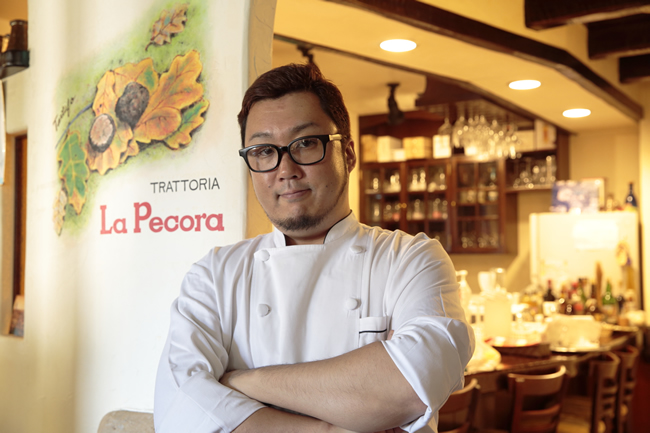
Second-generation chef Kawauchi Katsuki
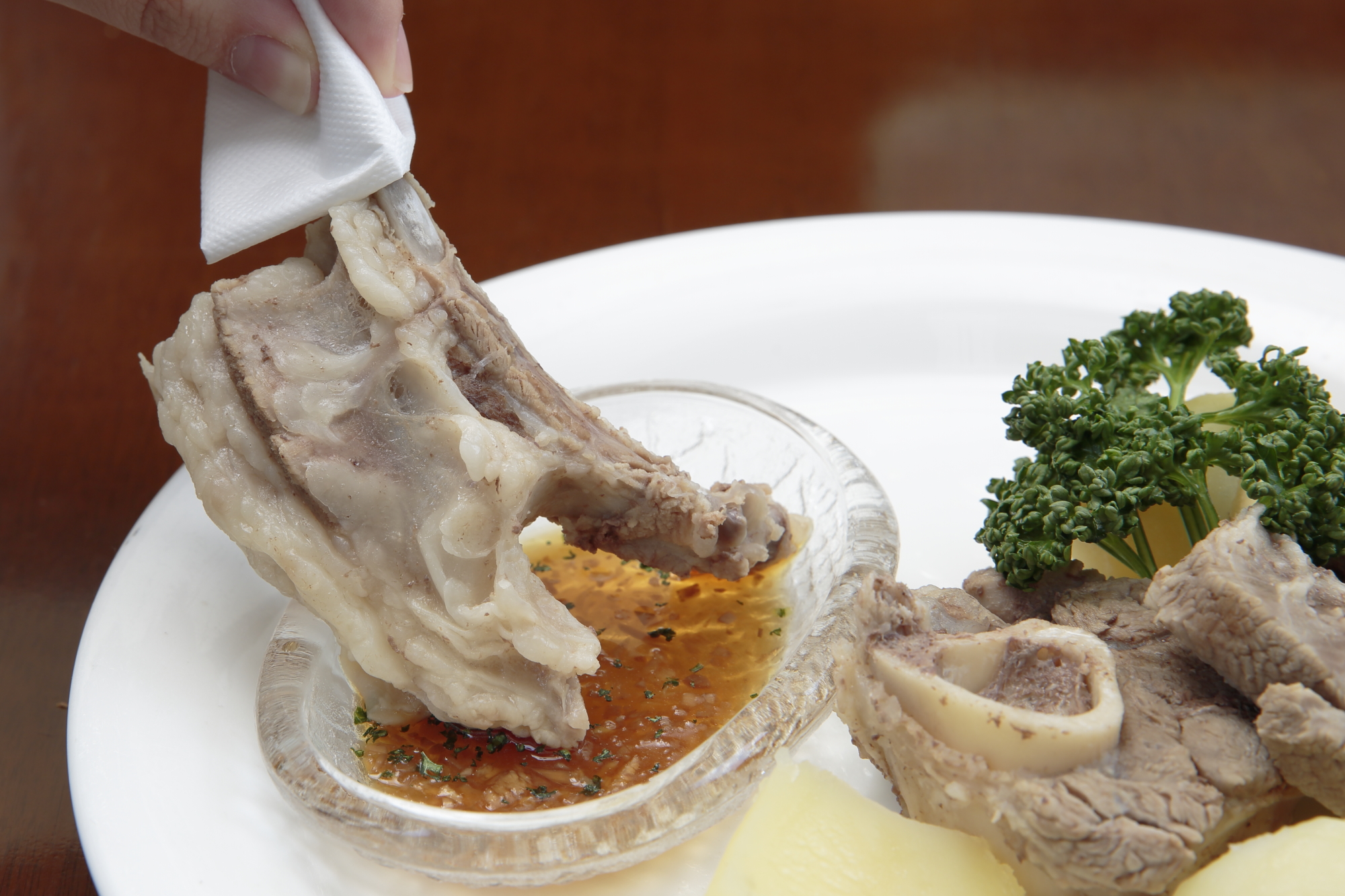
Shoubarou means "dish you eat with your hands."
When you try it, it is more tender than you imagined. Its fat is light and slightly sweet and it has no smell whatsoever. Potatoes boiled with the meat when it is being desalinated absorb a perfect amount of salt and the umami of the meat.

The chef recommended a red wine made 100 percent with Seibel grapes grown at Utsunomiya Vineyard in Urausu-cho.
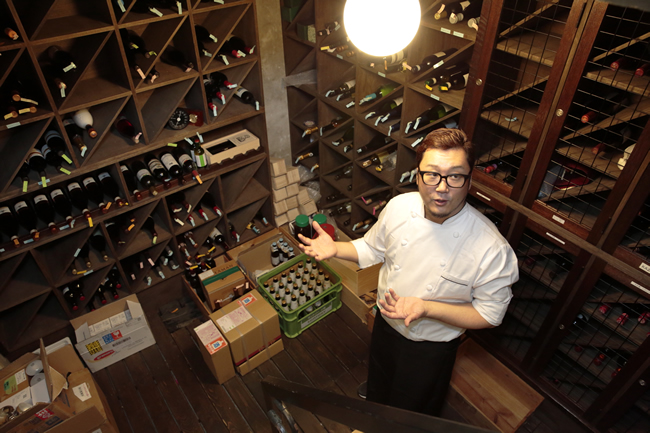
The wine cellar, which the original chef most emphasized when creating the restaurant
Spring is the season for milk-fed lamb. In the northern hemisphere, sheep give birth between January and March. Milk-fed lamb refers to the meat of a lamb butchered before it is weaned. It is a rare meat that can only be eaten between April and early May.
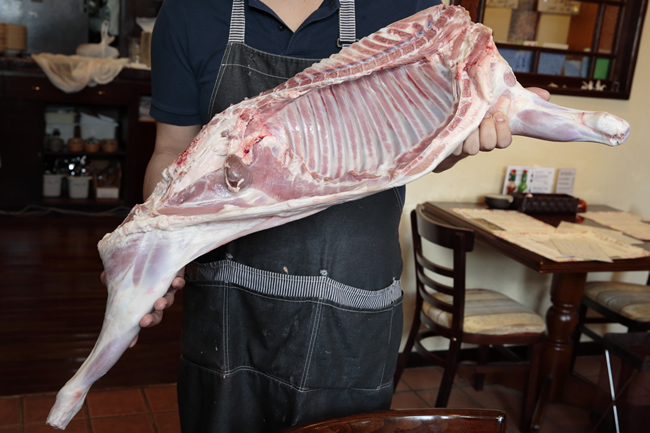
One-half of a milk-fed lamb's worth of meat on the bone, weighing less than 20 kg.
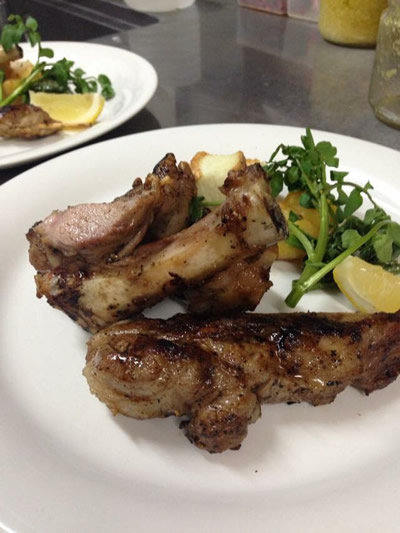
An assortment of grilled foods including milk-fed lamb.(Courtesy of La Pecora)
The sheep and lambs whose meat is served at La Pecora are raised at Hitsuji (Sheep) Marugoto Kenkyusho in Shiranuka-cho by Sakai Shingo. It is one of the few stock farms in Japan that sustains itself with wool and mutton/lamb alone, and its products are valued in the marketplace. Sakai's lamb was used for the lamb poêlé and roast served at the social dinner for the 2008 G8 Summit at Lake Toya, Hokkaido.
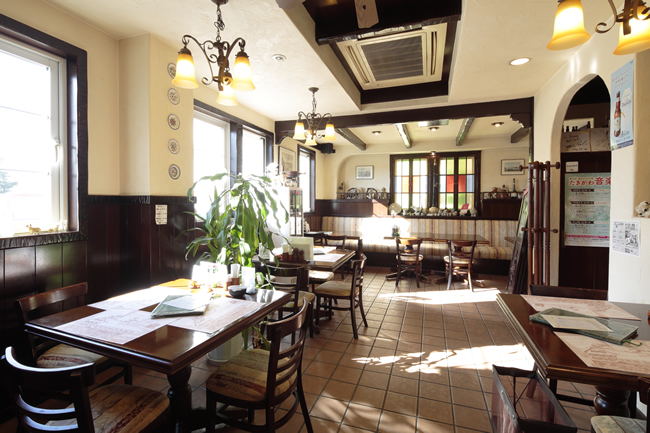
Everyone who visits La Pecora feels a fondness for this interior.
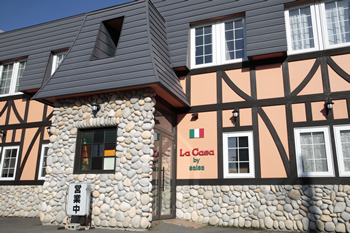

Hours: Lunch 11:30 to 14:30 Diner 17:30 to 22:00
Closed: Every Tuesday
4-11 Honmachi 1-chome Takikawa, Hokkaido, Japan
Tel.:0125-24-7856 Fax.:0125-23-7867
Website
There are many wineries and vineyards in the Sorachi region near Takikawa. Eleven restaurants in Takikawa allow customers to bring with them free of charge wine produced in a Sorachi winery.
Website